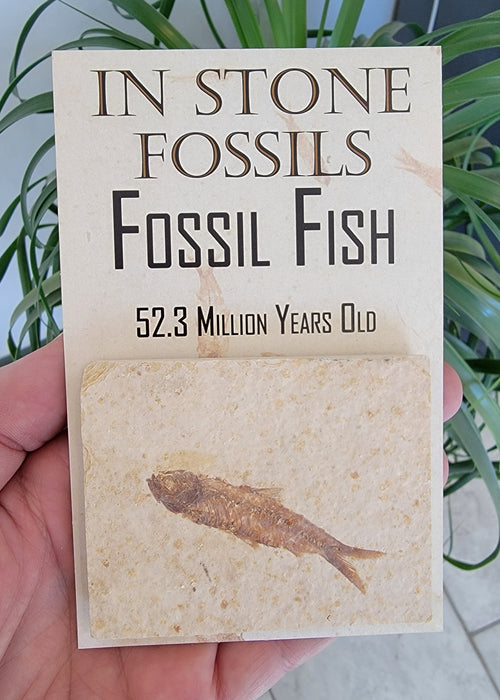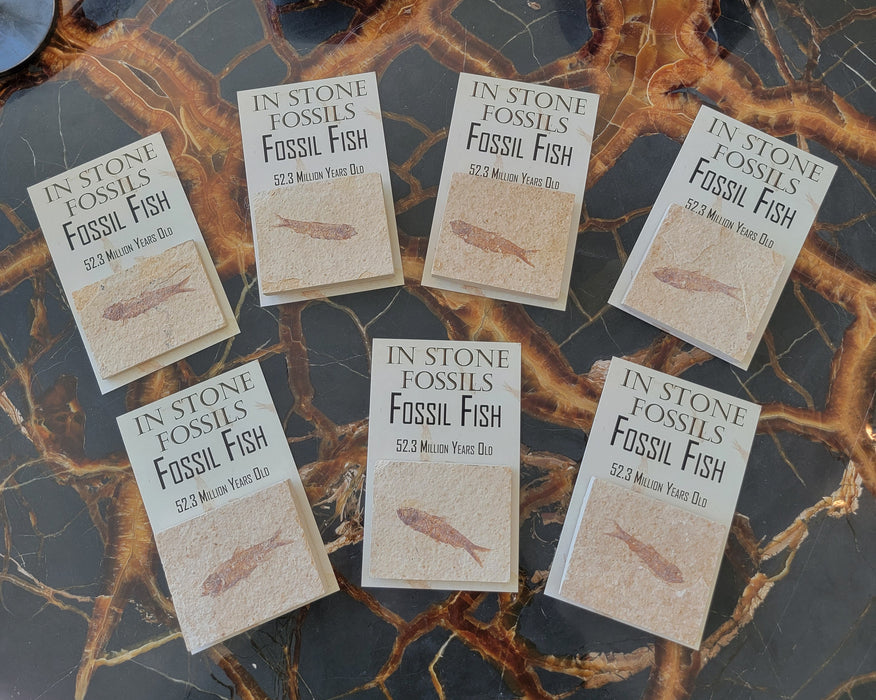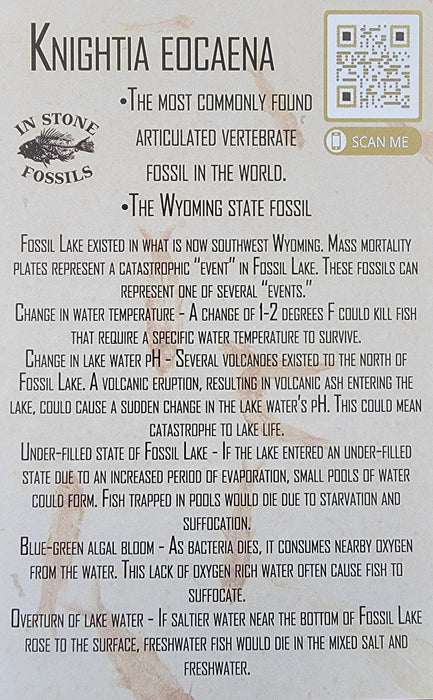
Fossil Mini Fish (Knightia eocaena) | Eco-Friendly | Green River Formation
Natural Knightia eocaena from In Stone Fossils Private Quarry
Receive ONE mini fish on description card. A must have for any collector big or small. Each fish is unique and may vary on size. (Multiple fish display picture to see variations)
Each card measures 5 ⅜" x 3 ⅜" and includes an authentic natural Knightia eocaena fossil fish attached to the info card.
Knightia is an extinct genus of clupeid bony fish that lived in the freshwater lakes and rivers of North America and Asia during the Eocene epoch. The genus was erected by David Starr Jordan in 1907, in honor of the late University of Wyoming professor Wilbur Clinton Knight, "an indefatigable student of the paleontology of the Rocky Mountains." It is the official state fossil of Wyoming, and the most commonly excavated fossil fish in the world.
Knightia belongs to the same taxonomic family as herring and sardines, and resembled the former closely enough that both Knightia alta and Knightia eocaena were originally described as species of true herring in the genus Clupea.
As with modern-day clupeids, Knightia sp. likely fed on algae and diatoms, as well as insects and occasionally smaller fish.
Anatomy
In Knightia fish, rows of dorsal and ventral scutes run from the back of the head to the medial fins. They had heavy scales and small conical teeth. Their size varied by species: Knightia eocaena was the longest, growing up to 25 cm (10 in), though most specimens are no larger than 15 cm. K. alta was shorter and relatively wider, with specimens averaging between 6 and 10 cm.
Predators
A small schooling fish, Knightia made an abundant food source for larger Eocene predators. The Green River Formation has yielded many fossils of larger fish species preying on Knightia; specimens of Diplomystus, Lepisosteus, Amphiplaga, Mioplosus, Phareodus, Amia, and Astephus have all been found with Knightia in either their jaws or stomachs.


